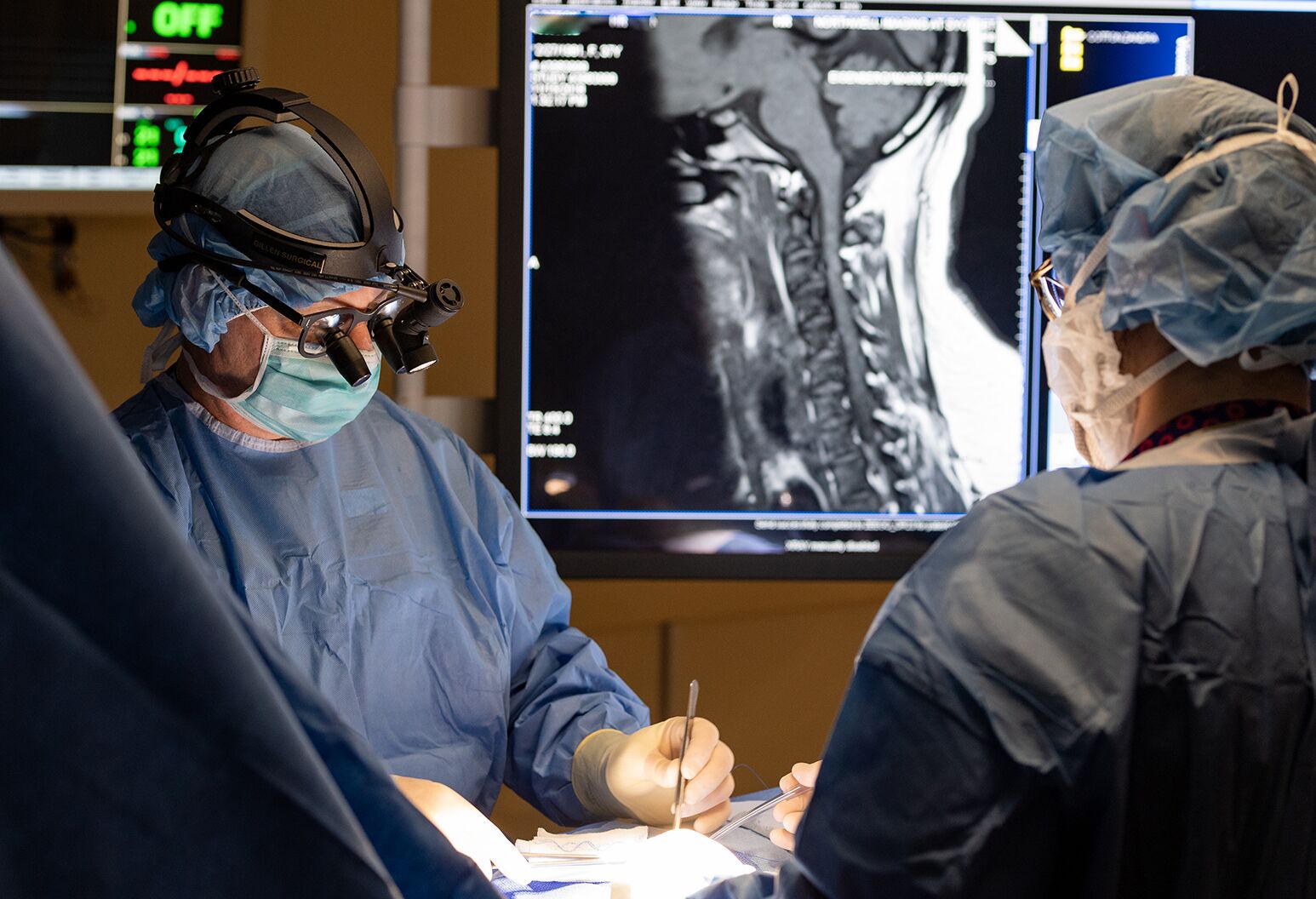Networking with the Best Spine Surgeons in St Louis MO for Comprehensive Treatment
Networking with the Best Spine Surgeons in St Louis MO for Comprehensive Treatment
Blog Article
A Summary of Back Problems That Typically Cause Surgical Treatments
Spine conditions such as herniated discs, spinal constriction, and degenerative disc illness often necessitate surgical interventions when traditional treatments fail to minimize relentless signs. Understanding the subtleties of each problem and the matching medical choices, such as discectomy or back blend, is essential for efficient management.
Herniated Discs
Although several individuals with herniated discs might find alleviation through conventional treatments, surgery comes to be a required consideration when signs linger or intensify - best spine surgeons in st louis mo. A herniated disc takes place when the soft inner gel of a back disc protrudes via its outer layer, possibly leading and compressing neighboring nerves to pain, feeling numb, or weakness in the extremities
Conservative administration normally includes physical therapy, discomfort medications, and corticosteroid injections, which intend to decrease swelling and boost feature. In cases where these approaches fail to ease debilitating symptoms, surgical options may be explored.
One of the most typical surgery for herniated discs is a discectomy, which includes the elimination of the herniated portion of the disc to relieve stress on the influenced nerve root. In more severe cases, spinal blend might be necessary to stabilize the impacted vertebrae.
Clients are encouraged to discuss the possible dangers and benefits of surgery with their health care service provider to make a notified decision. Ultimately, the objective of any kind of surgical intervention is to recover feature, reduce pain, and enhance overall lifestyle for people experiencing from herniated discs.
Spinal Stenosis
Back constriction takes place when the rooms within the spinal column narrow, bring about raised pressure on the spine and nerves. This condition can create in numerous areas of the spine, including the cervical and lumbar areas, frequently as a result of age-related adjustments, such as degenerative disc condition, joint inflammation, or enlarging of ligaments.
Individuals with back stenosis might offer with signs and symptoms that include pain, pins and needles, tingling, or weakness, mostly in the arms or legs. These signs and symptoms can be exacerbated by tasks that entail standing or walking, typically leading people to look for relief through conventional treatments like physical therapy, medications, or epidural steroid injections.
Nevertheless, when these non-surgical interventions fail to provide adequate relief, medical choices might be considered. Common operations for spinal constriction include laminectomy, which involves the removal of part of the vertebra to reduce pressure, and spine blend, which maintains the afflicted area. The choice to seek surgical treatment is commonly based on the extent of symptoms, the degree of functional disability, and the overall health and wellness of the patient. Trigger medical diagnosis and administration are critical to avoid more neurological compromise and enhance top quality of life.
Spondylolisthesis
Spondylolisthesis happens when one vertebra slips ahead over an additional, resulting in misalignment of the spine. This problem can result from different variables, including hereditary flaws, trauma, or degenerative adjustments in the spine. It is most frequently observed in the back region, especially at the L4-L5 and L5-S1 levels.

When non-surgical techniques stop working to soothe symptoms or when significant nerve compression is existing, surgical treatment may be necessitated. Surgical options can consist of back fusion or decompression treatments, intended at restoring positioning and reducing neurological signs and symptoms.
Degenerative Disc Illness

Individuals with DDD typically experience pain that may radiate to the legs or arms, depending upon the impacted area of the spine. The condition can be diagnosed through a combination of scientific assessment, imaging researches, and individual history. Therapy options generally begin with traditional procedures, consisting of physical therapy, discomfort management, and lifestyle modifications. When these approaches fall short to supply adequate relief, surgical interventions may be taken into consideration.
Surgical options for DDD might include back combination or artificial disc substitute, targeted at stabilizing the influenced segment and minimizing discomfort (best spine surgeons in st louis mo). Eventually, the option of therapy is individualized, thinking about the seriousness of the condition, patient wellness, and way of life factors
Back Lumps

Spine growths can arise from numerous factors, consisting of hereditary predisposition, ecological impacts, and pre-existing medical conditions. Clients might offer with a range of symptoms, including localized pain, neurological deficiencies, weakness, or adjustments in bowel and bladder function, depending on the growth's size and place.
Diagnosis commonly involves imaging research studies such as MRI or CT scans, which aid mark the lump's qualities and influence on surrounding structures. In assessing therapy alternatives, the growth's area, kind, and quality are crucial factors to consider. Surgical treatment may try this web-site be warranted to relieve signs, acquire a biopsy, or get rid of the growth totally. The objective of surgical treatment is often to unwind neural elements and stabilize the spine. Adjuvant therapies, including radiation or radiation treatment, might also be required depending upon the growth's nature. Early discovery and treatment are essential for maximizing results in individuals with spinal lumps.
Verdict
In summary, spinal column problems such as herniated discs, back constriction, spondylolisthesis, degenerative disc disease, and spinal growths regularly necessitate surgical treatment because of their potential to trigger considerable discomfort and practical problems. While conventional therapies may use momentary relief, surgical alternatives come to be critical when signs aggravate or linger. Timely diagnosis and intervention play a crucial duty in restoring feature and boosting the lifestyle for damaged individuals, emphasizing the significance of thorough spine care.

Report this page